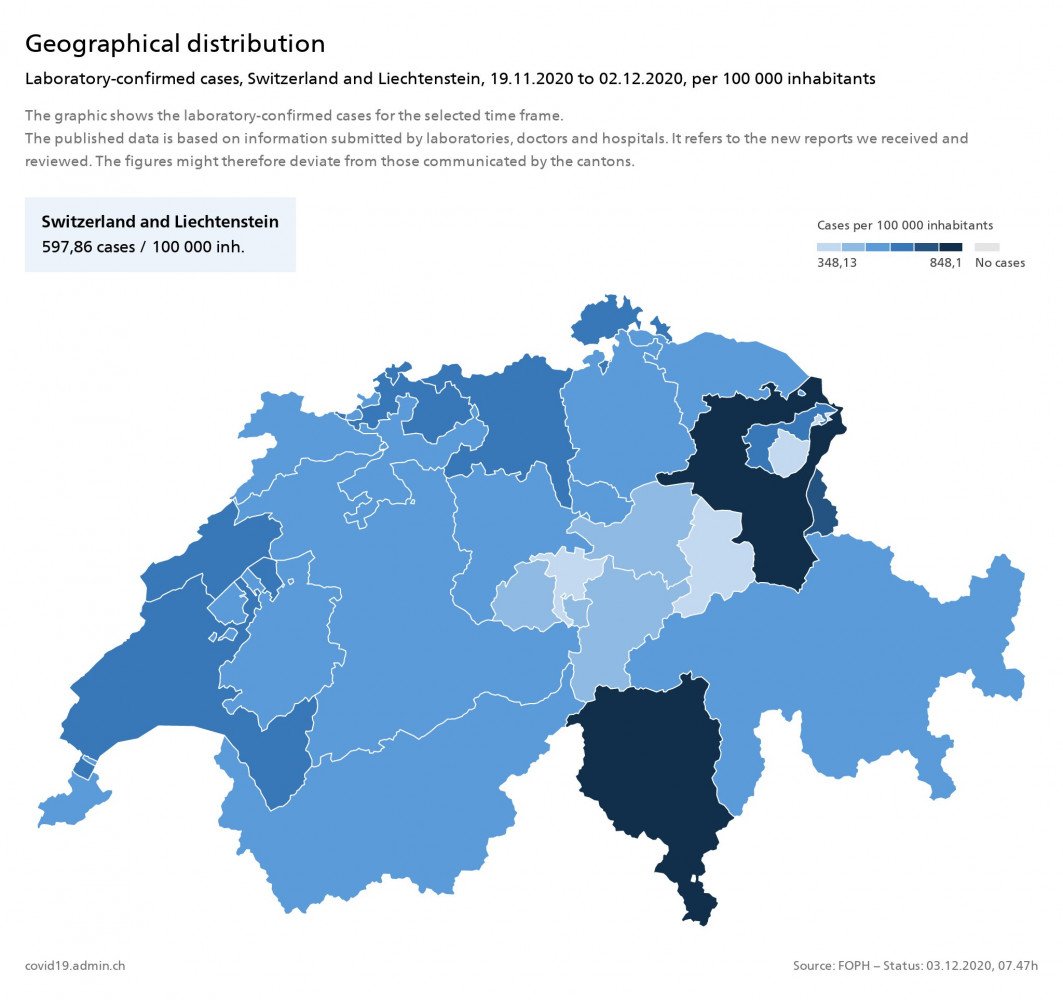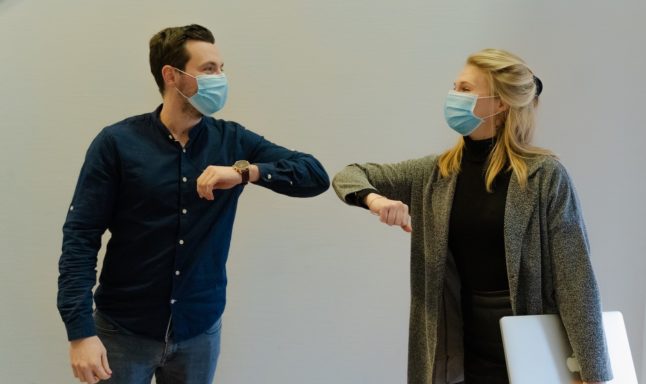In the first half of November, Geneva had Europe’s highest number of infections per capita —nearly 2,800 cases per 100,000 inhabitants.
Six other French-speaking cantons were also ranked among the European regions with the highest number of contaminations per capita: Valais was in the second place, Fribourg in the fourth, Jura in the fifth, Vaud in the seventh, and Neuchâtel in the ninth.
Data released by the Federal Office of Public Health (FOPH) shows that Geneva’s rate is currently 588 per 100,000 people, which is below the national average this week of 597 cases per 100 000.
Numbers in most other French cantons also now fall below this average. Only Vaud still has 628 infections per 100,000.
“The French-speaking cantons are no longer Switzerland’s dunces in terms of the circulation of the coronavirus”, Le Matin newspaper wrote on Friday.
The German speaking region, on the other hand, initially had a much lower rate of infections, prompting the Swiss to coin a new expression, ‘coronagraben’ (‘corona divide’), to describe the divergent epidemiological situations in French and German-language cantons.
EXPLAINED: What exactly is ‘coronagraben’ in Switzerland?
Now however, the trend of infections has shifted, with Swiss-German cantons, along with Ticino, exceeding the national average.
For instance, St. Gallen has 790 cases / 100,000 inhabitants, Basel-City 656, Schaffhausen 638, Basel-Country 635, Appenzell Ausserrhoden (629) and Aargau (608).
The highest number of cases is recorded in Ticino, with 848 infections per 100,000.

This FOPH chart shows which cantons have the highest infection rates.
The reason for this shift is that each French-speaking region had implemented a raft of restrictions to curb the alarming increase in infections and hospitalisations.
The measures went beyond those mandated on the national level, and included the closure of bars and restaurants, as well as all entertainment and leisure venues like cinemas, theatres, fitness centres, swimming pools, and sports facilities.
In Geneva, restrictions went even further, extending to the closure of all non-essential stores and businesses.
Meanwhile Swiss-German cantons implemented only the measures required at the federal level, but allowed their restaurants, bars, and other venues to remain open.
Health Minister Alain Berset said on Thursday that the drop in numbers recorded in November was mainly due to the French-speaking cantons, and called on the German language regions to “play their role” in curbing further contaminations.
He also pointed out that after a “good evolution” when the number of new cases halved every two weeks, the numbers are “stagnating at high level of 4000 to 5000 cases per day”, calling this development “very worrying”.



 Please whitelist us to continue reading.
Please whitelist us to continue reading.
Member comments